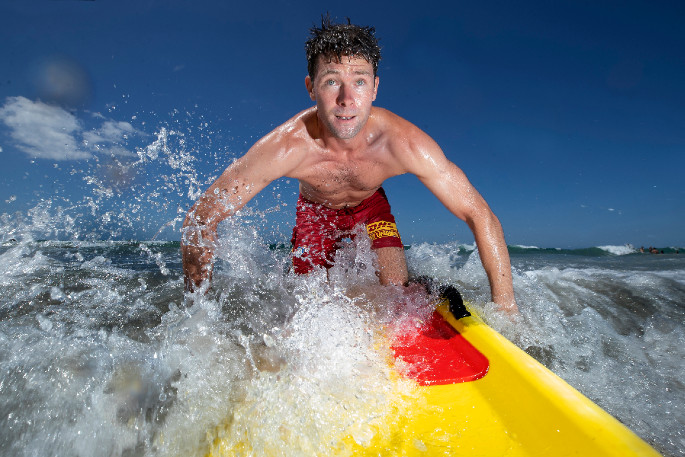King tides, increased surf activity from tropical cyclones and outgoing tides during the hottest part of the day are contributing factors to the huge number of rescues lifeguards in the region have carried out this summer.
In the week ending Sunday, January 16, there were 13 rescues of note in the Western Bay of Plenty and 44 assists as lifeguards helped people back to safety, says Eastern Region surf lifesaving manager Chaz Gibbons-Campbell.
The week culminated in large swells from Cyclone Cody. Beaches were ‘red flagged', with people asked to stay out of the water because of the tsunami warning after underwater volcano Hunga-Tonga-Hunga-Ha'apai erupted on Saturday.
The red flags started to come down on Monday as individual surf clubs assessed the conditions, but the danger remains says Chaz
'The risky time for us is actually when the surf gets a bit smaller - that sort of half-a-meter to a meter swell - because there's still a lot of water moving around,” he says.
'This causes a lot of rips along the coast.
'That's when we urge caution. We ask to people to check the conditions and find a patrolled beach.”
Chaz says the majority of rescues last week were outside of flagged areas.
The importance of swimming at a patrolled beach was also highlighted by three major water incidents that occurred near Omanu Beach during the holiday period.
A man died and two men were taken to hospital in a critical condition in three separate water incidents between January 4 and January 8.
Chaz is imploring people to swim at a patrolled location, especially as two of the critical incidents occurred in Arataki, where it can take lifeguards up to 30 minutes to patrol there in a buggy.
'If you're not going to swim at a patrolled location, please make sure you're swimming within your limits.”
Some of the lifeguards involved in the three rescues at Omanu Surf Lifesaving Club are 'pretty shaken up”, he says.
All three men required CPR after being removed from the water, which was a first for some of the guards says Chaz.
Ambulance staff who attended the incidents returned to the club to explain things to the team from a medical perspective which really helped, says the lifesaving manger.
Surf Life Saving New Zealand provides support to active and current members and their families through Benestar, a counselling and wellbeing provider.
'We've also got a fantastic peer support program, which sees fellow lifeguards come in after a critical incident and debrief the lifeguards,” says Chaz.
Patrolled locations in the Western Bay of Plenty are Waihī Beach, Bowentown, Mount Maunganui, Tay Street, Omanu Beach, Pāpāmoa Beach, Pāpāmoa East and Pukehina. To check if a beach near you is patrolled, visit: www.safeswim.org.nz
Chaz recommends going to the beach with friends so you can keep an eye on each other, assessing the conditions and looking out for rip currents.
How to spot a rip
Look out for calm patches in the surf with waves breaking at each side, a ripple pattern on the sand or small holes beneath your feet in the water, and discoloured or foamy water.
Other signs are regions of deeper, darker water with less wave breaking activity between areas of white water; think of them as rivers of the sea. The discoloration is created by the current picking up sand in the water as it moves out to sea.
Be wary around rocky headlands and rocky groins. Rip currents are also common in areas with piers, jetties and anything else that sticks out from the beach that could catch a longshore current and cause it to start flowing away from shore.
Most importantly, if you're unsure about conditions ask the nearest lifeguard. Otherwise, stay out.
If you are caught in a rip remember the Three Rs.
Relax and float to conserve your energy. Raise your hand to signal for help. Ride the rip until it stops and you can swim back to shore or until help arrives.
'I encourage people to do a little bit of homework before you leave the house to make sure that you prepare for a day at the beach,” says Chaz.



0 comments
Leave a Comment
You must be logged in to make a comment.